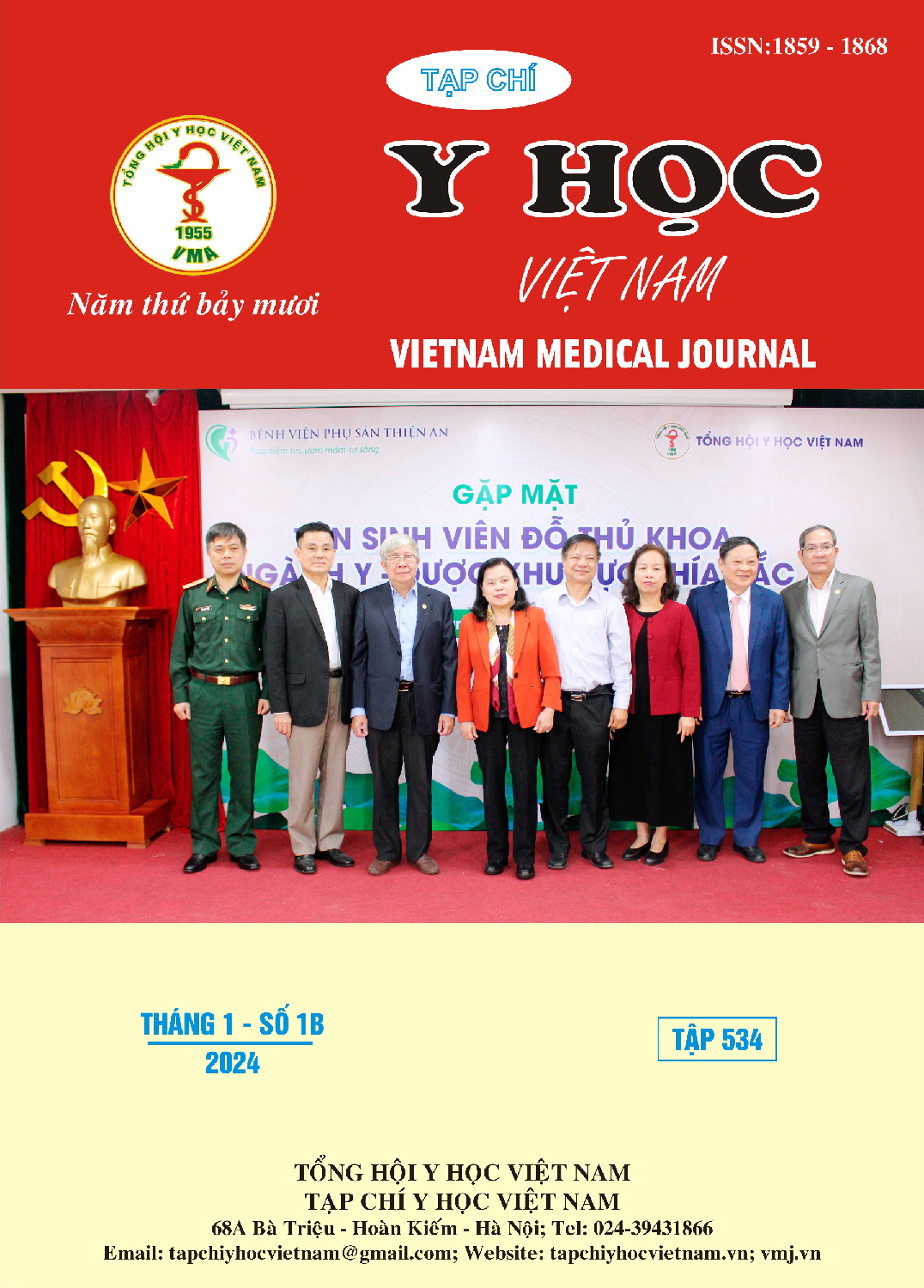THE ASSOCIATION BETWEEN SOME OUT-OF-HOSPITAL FACTORS AND TIME TO HOSPITAL IN ISCHEMIC STROKE PATIENTS
Main Article Content
Abstract
Objective: To study the relationship between some out-of-hospital factors and time to hospital in ischemic stroke patients. Subject and method. A prospective, cross-sectional, controlled study, included: 86 patients with cerebral infarction who came to the hospital ≤ 4.5hours from onset, and 170 patients after 4.5 hours. Result. Patients with a high level of education had a higher proportion of patients coming to the hospital ≤ 4.5 hours than the rate of patients coming to the hospital after 4.5 hours, with p = 0.002. Patients who understand stroke have a 70.6% rate of going to the hospital before 4.5 hours, higher than that after 4.5 hours, with p = 0.000. If the distance to the hospital is less than 5.05km, patients are likely to arrive at the hospital 4.5 hours before, with a sensitivity of 83% and a specificity of 79%, with p < 0.05. Conclusion: Education level, understanding of stroke, and distance to hospital are related to time to hospital in ischemic stroke patients
Article Details
References
2. Powers, W.J., et al., 2018 Guidelines for the Early Management of Patients With Acute Ischemic Stroke: A Guideline for Healthcare Professionals From the American Heart Association/American Stroke Association. Stroke, 2018. 49(3): p. e46-e99.
3. Paul, C.L., et al., How can we improve stroke thrombolysis rates? A review of health system factors and approaches associated with thrombolysis administration rates in acute stroke care. Implementation science: IS, 2016. 11: p. 51-51.
4. Acharya, A.B., et al., Distance from home to hospital and thrombolytic utilization for acute ischemic stroke. J Stroke Cerebrovasc Dis, 2011. 20(4): p. 295-301.
5. Aguiar de Sousa, D., et al., Access to and delivery of acute ischaemic stroke treatments: A survey of national scientific societies and stroke experts in 44 European countries. European Stroke Journal, 2018. 4(1): p. 13-28.
6. Lahr, M.M.H., et al., Proportion of Patients Treated With Thrombolysis in a Centralized Versus a Decentralized Acute Stroke Care Setting. 2012. 43(5): p. 1336-1340.
7. Kunisawa, S., et al., Factors associated with the administration of tissue plasminogen activator for acute ischemic stroke. J Stroke Cerebrovasc Dis, 2014. 23(4): p. 724-31.
8. Powers, W.J., et al., Guidelines for the Early Management of Patients With Acute Ischemic Stroke: 2019 Update to the 2018 Guidelines for the Early Management of Acute Ischemic Stroke: A Guideline for Healthcare Professionals From the American Heart Association/American Stroke Association. Stroke, 2019. 50(12): p. e344-e418.


